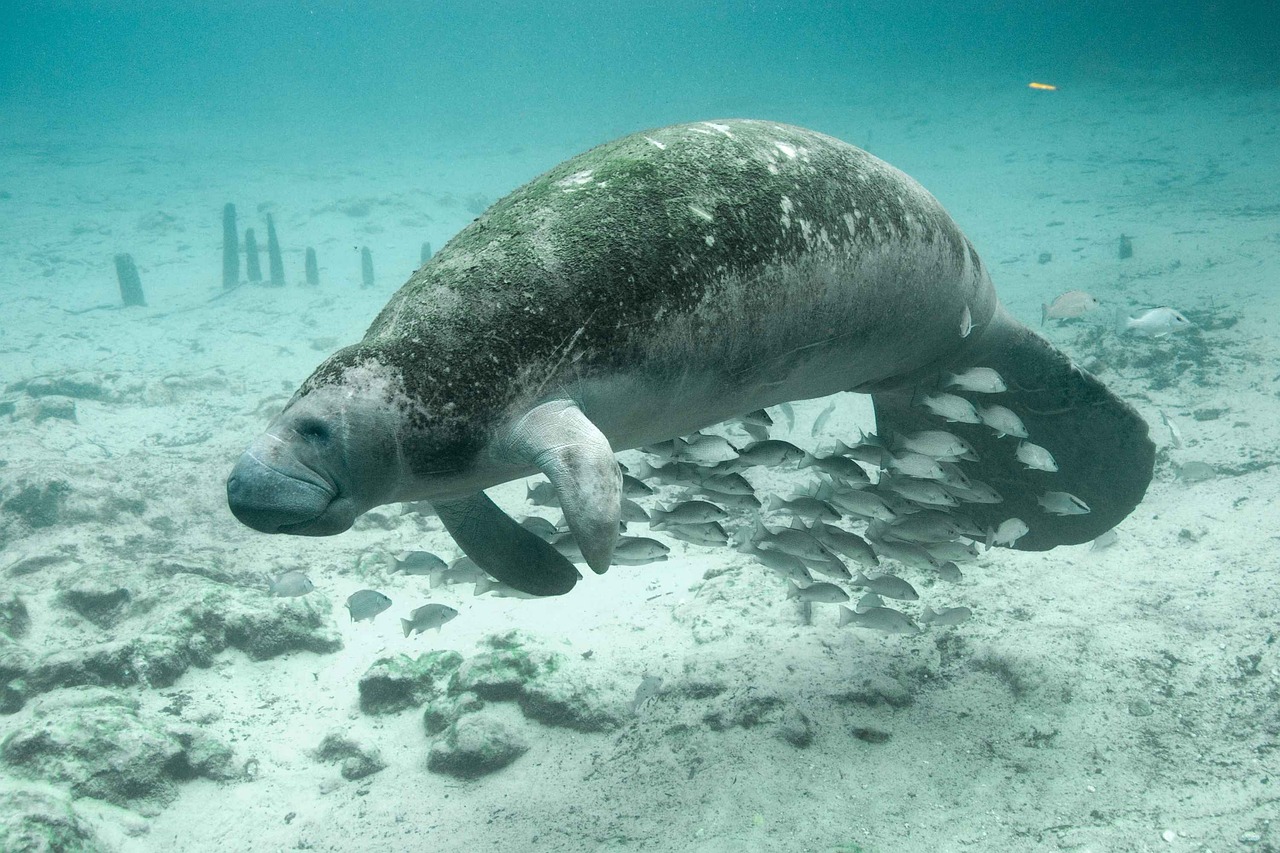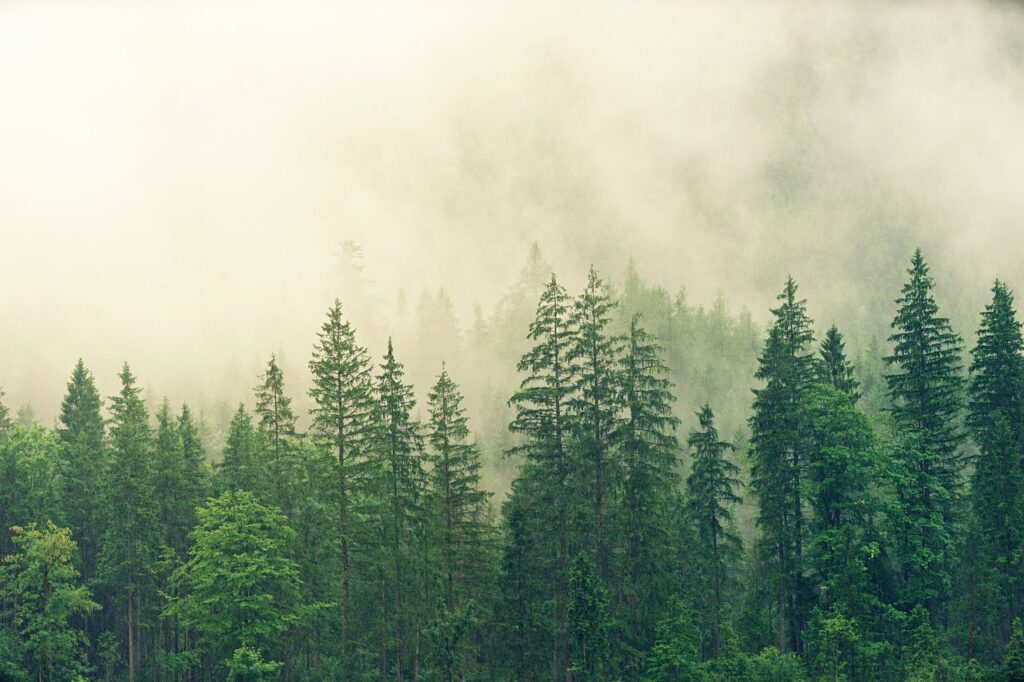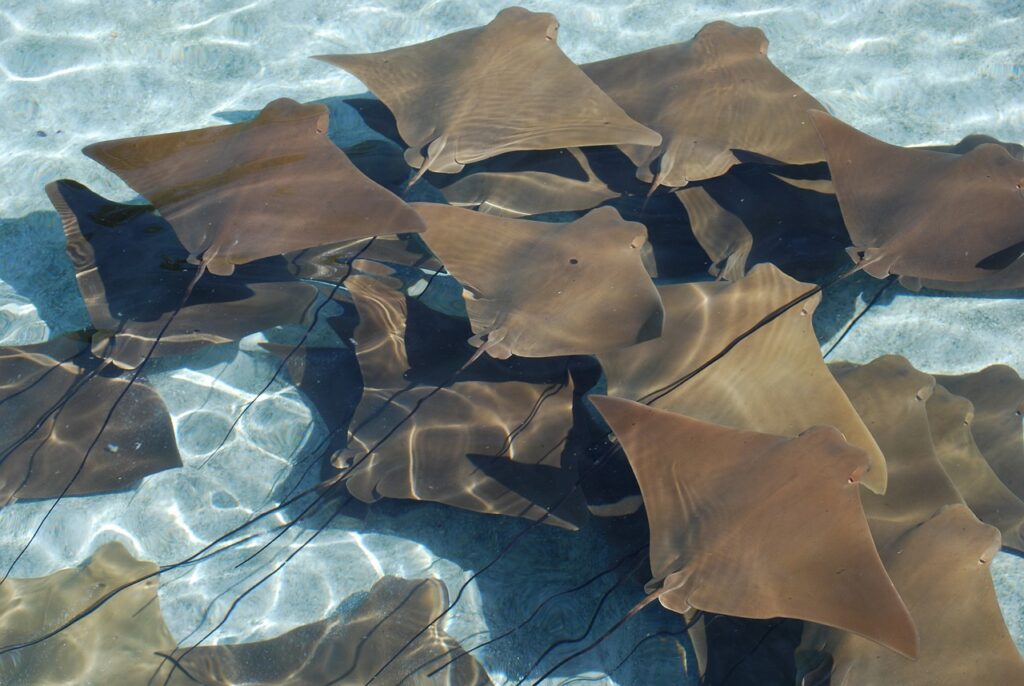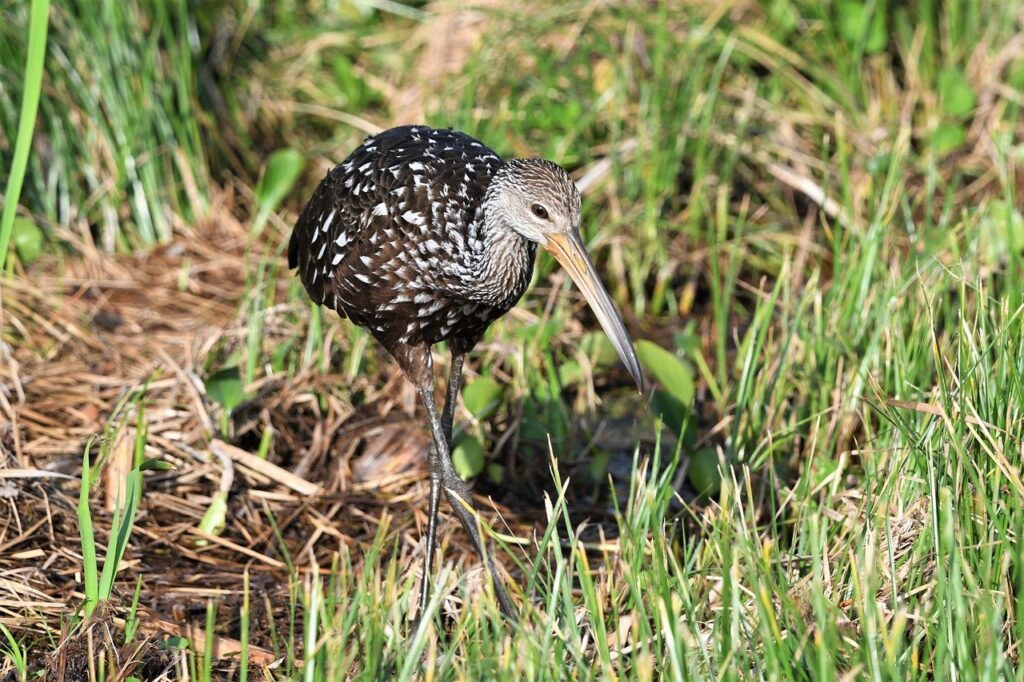
Of all the animals here in Florida, one of the more notable species is the manatee. Manatee Appreciation Day is celebrated on the last Wednesday in March to raise awareness of their role in the ecosystem and conservation efforts in place to help with the challenges these animals face. Manatees are mammals that live in many aquatic ecosystems. These animals rely on seagrass communities for their food. Since these communities are declining worldwide, the manatee populations have suffered due to a lack of natural resources. These seagrass communities not only help manatee populations, but other organisms including octopi, sea turtles, shrimp, crabs, and oysters utilize these areas for food, shelter, and even nurseries. Seagrass also helps to protect coastal areas from erosion which helps protect houses and coastal developments. Manatees help protect the health of this ecosystem by eating and maintaining the growth of the grass.
This decline in natural resources is not the only thing that has been negatively impacting the manatee population. Human impacts such as boating-related accidents and water pollution have harmed individual animals and the ecosystem where they live. Boaters often will not see these animals in shallow areas or disregard signage indicating the presence of these animals or mandatory speed limits. Conservation organizations are working hard to improve the ecosystems for manatees, clean up water pollution, and educate the public about manatees and the value they provide.
Things you can do to help manatees:
- Obey all speed zone signs and look out for manatees when boating.
- Dispose of your trash properly.
- Support conservation organizations
- Participate in coastal cleanup events.
- Attend boating safety classes or take online courses.



